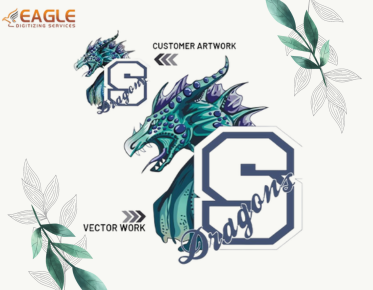How to Start Embroidery Digitizing
Embroidery digitizing is a fascinating blend of art and technology, allowing you to transform any design into a digital format that can be embroidered onto fabric. Whether you're a hobbyist looking to personalize your creations or a business aiming to offer custom embroidery services, understanding the basics of embroidery digitizing is essential. To get started, you'll need to familiarize yourself with the necessary tools and software, such as embroidery digitizing software, and understand the process of converting images into stitch files.
Understanding the Basics
Embroidery digitizing involves converting artwork into a digital file that an embroidery machine can read. This process requires specialized software that allows you to map out stitches, choose thread colors, and set stitch types. The first step is to select a design and import it into your digitizing software. From there, you can begin the process of digitizing by outlining the design and setting the stitch paths.
Choosing the Right Software
There are several software options available for embroidery digitizing, each with its own set of features and capabilities. Popular choices include Wilcom, Hatch, and Brother's PE-Design. When selecting software, consider your budget, the complexity of designs you plan to create, and the level of support and tutorials available. For beginners, software like Hatch Embroidery offers a user-friendly interface and comprehensive tutorials to help you get started.
Essential Tools and Equipment
In addition to software, you'll need an embroidery machine capable of reading digital files. These machines vary in size and capability, from small home models to large commercial machines. It's important to choose a machine that suits your needs and budget. Additionally, you'll need a computer with sufficient processing power to run your digitizing software smoothly.
Learning the Digitizing Process
The digitizing process involves several steps, including setting the stitch type, direction, and density. You'll also need to decide on the order of stitching, which can affect the final appearance of the design. It's crucial to test your designs on fabric to ensure they stitch out correctly. Many digitizing software programs offer simulation features that allow you to preview the stitching process before you begin.
Practicing and Improving Your Skills
Like any skill, embroidery digitizing requires practice. Start with simple designs and gradually work your way up to more complex patterns. Take advantage of online resources, such as tutorials and forums, to learn new techniques and troubleshoot any issues you encounter. Joining a community of embroidery enthusiasts can also provide valuable support and inspiration.
Exploring Advanced Techniques
Once you're comfortable with the basics, you can explore advanced digitizing techniques, such as 3D puff embroidery, applique, and gradient fills. These techniques can add depth and dimension to your designs, making them stand out. Experimenting with different stitch types and effects can also help you develop your unique style.
Offering Embroidery Digitizing Services
If you're interested in turning your digitizing skills into a business, consider offering custom embroidery digitizing services. This involves working with clients to create personalized designs and converting them into stitch files. Building a portfolio of your work and establishing a strong online presence can help attract clients. Platforms like Etsy and specialized websites offer opportunities to showcase and sell your digitizing services.
Staying Updated with Industry Trends
The world of embroidery digitizing is constantly evolving, with new software updates and techniques emerging regularly. Staying informed about industry trends can help you keep your skills sharp and offer the latest styles to your clients. Subscribing to industry newsletters, attending trade shows, and participating in online forums are great ways to stay connected with the embroidery community.
Embroidery digitizing is a rewarding skill that combines creativity with technical expertise. Whether you're creating designs for personal use or offering professional services, the possibilities are endless. As you continue to hone your skills, consider how you can incorporate new technologies and techniques into your work. Eagle Digitizing excels in providing professional embroidery digitizing services, ensuring every design is crafted with unmatched precision. What new trends in embroidery digitizing are you excited to explore?
.png)


